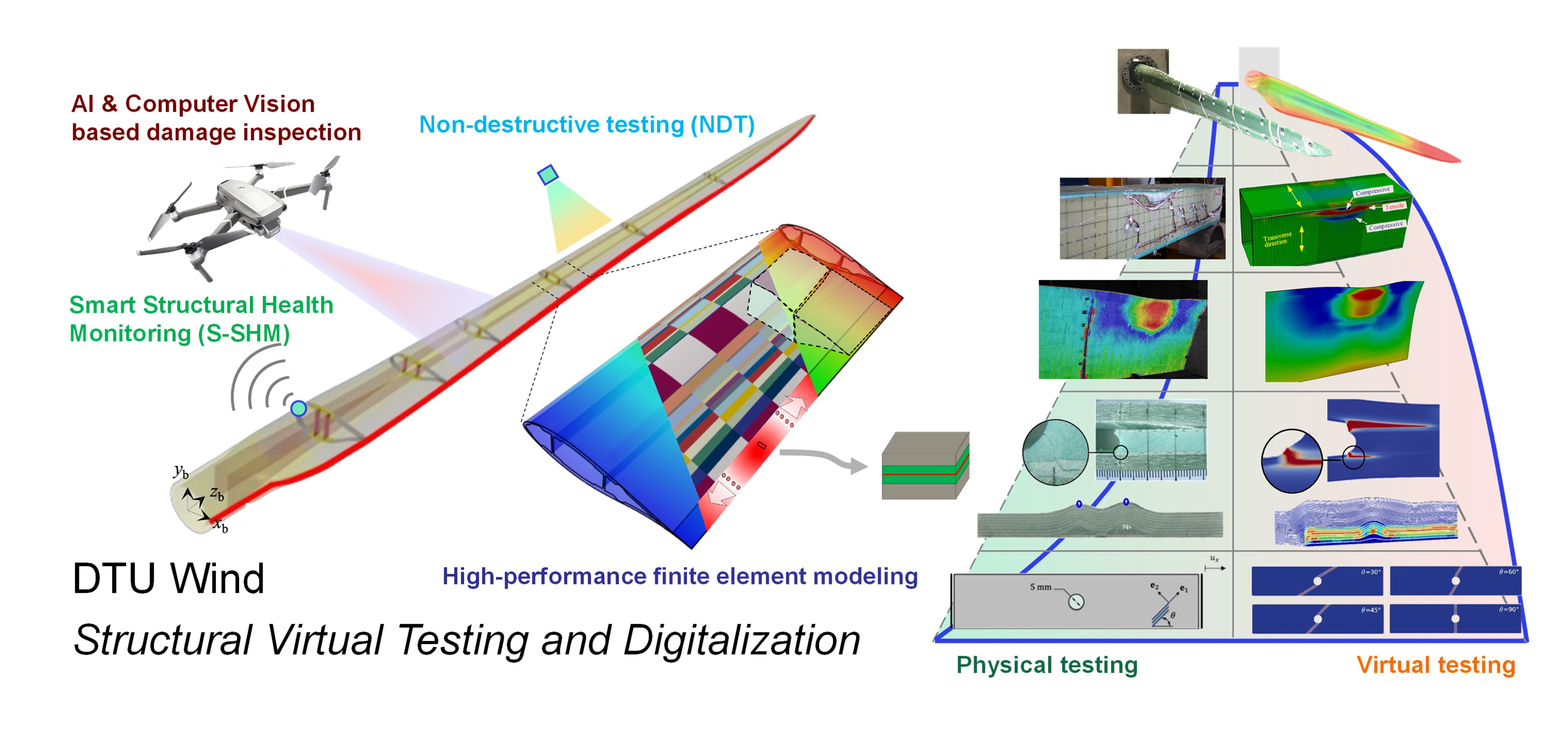Disciplines
- Composite structures
- Damage and fracture mechanics
- Finite element modeling
- Non-destructive testing
- Structural health monitoring
- Computer vision and machine learning
Our ambition is both to reduce the time required for and increase the value of physical testing of wind turbine structural components by using high-performance virtual testing and cutting-edge digital technologies.

The section’s expertise lies in multi-scale progressive failure analysis using advanced finite element models and simulation techniques. This is enabled by digital and sensor technologies such as artificial intelligence, computer vision, drones, and robotics, which are utilized for efficient, non-destructive inspection, damage characterization, damage evaluation, and health monitoring of wind turbine structural elements and components.
We develop tools and software to increase both the accuracy and efficiency of structural digital representation as virtual digital twins, providing high-quality value-added services to the industry.
Disciplines
Competences
Research area & applications
Xiao Chen Head of Section xiac@dtu.dk